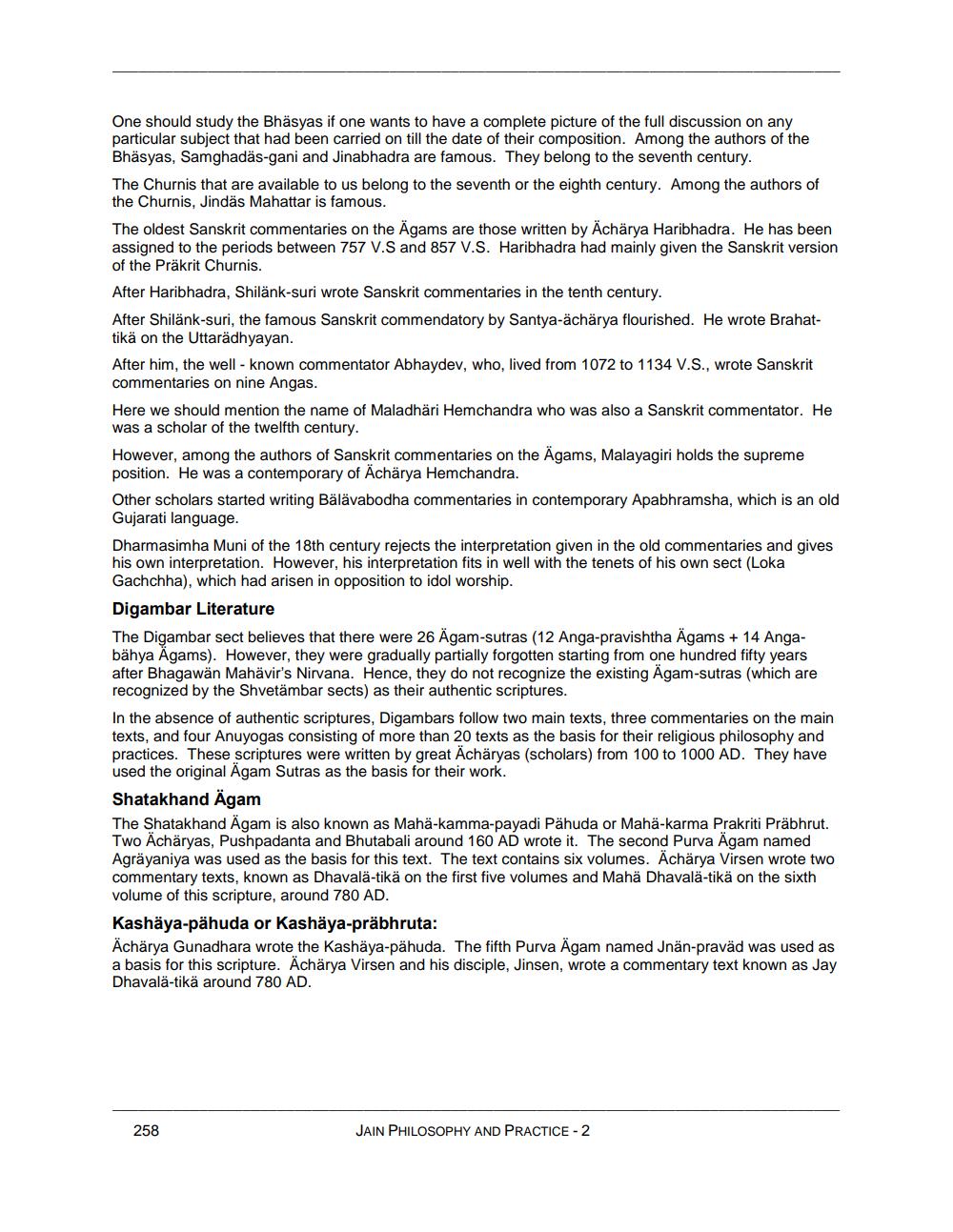________________
One should study the Bhäsyas if one wants to have a complete picture of the full discussion on any particular subject that had been carried on till the date of their composition. Among the authors of the Bhäsyas, Samghadäs-gani and Jinabhadra are famous. They belong to the seventh century.
The Churnis that are available to us belong to the seventh or the eighth century. Among the authors of the Churnis, Jindäs Mahattar is famous.
The oldest Sanskrit commentaries on the Ägams are those written by Ächärya Haribhadra. He has been assigned to the periods between 757 V.S and 857 V.S. Haribhadra had mainly given the Sanskrit version of the Präkrit Churnis.
After Haribhadra, Shilänk-suri wrote Sanskrit commentaries in the tenth century.
After Shilänk-suri, the famous Sanskrit commendatory by Santya-ächärya flourished. He wrote Brahattikä on the Uttarädhyayan.
After him, the well-known commentator Abhaydev, who, lived from 1072 to 1134 V.S., wrote Sanskrit commentaries on nine Angas.
Here we should mention the name of Maladhäri Hemchandra who was also a Sanskrit commentator. He was a scholar of the twelfth century.
However, among the authors of Sanskrit commentaries on the Ägams, Malayagiri holds the supreme position. He was a contemporary of Ächärya Hemchandra.
Other scholars started writing Bälävabodha commentaries in contemporary Apabhramsha, which is an old Gujarati language.
Dharmasimha Muni of the 18th century rejects the interpretation given in the old commentaries and gives his own interpretation. However, his interpretation fits in well with the tenets of his own sect (Loka Gachchha), which had arisen in opposition to idol worship.
Digambar Literature
The Digambar sect believes that there were 26 Ägam-sutras (12 Anga-pravishtha Ägams + 14 Angabähya Ägams). However, they were gradually partially forgotten starting from one hundred fifty years after Bhagawan Mahävir's Nirvana. Hence, they do not recognize the existing Ägam-sutras (which are recognized by the Shvetämbar sects) as their authentic scriptures.
In the absence of authentic scriptures, Digambars follow two main texts, three commentaries on the main texts, and four Anuyogas consisting of more than 20 texts as the basis for their religious philosophy and practices. These scriptures were written by great Ächäryas (scholars) from 100 to 1000 AD. They have used the original Ägam Sutras as the basis for their work.
Shatakhand Agam
The Shatakhand Ägam is also known as Mahä-kamma-payadi Pähuda or Mahä-karma Prakriti Präbhrut. Two Ächäryas, Pushpadanta and Bhutabali around 160 AD wrote it. The second Purva Ägam named Agräyaniya was used as the basis for this text. The text contains six volumes. Ächärya Virsen wrote two commentary texts, known as Dhavalä-tikä on the first five volumes and Mahä Dhavalä-tikä on the sixth volume of this scripture, around 780 AD.
Kashaya-pähuda or Kashaya-präbhruta:
Ächärya Gunadhara wrote the Kashaya-pähuda. The fifth Purva Ägam named Jnän-praväd was used as a basis for this scripture. Ächärya Virsen and his disciple, Jinsen, wrote a commentary text known as Jay Dhavalä-tikä around 780 AD.
258
JAIN PHILOSOPHY AND PRACTICE - 2




